By Robert Tate, Automotive Historian and Researcher
Images Courtesy of Various Auto Collectors, the Robert Tate Collection
Published 5.24.2023
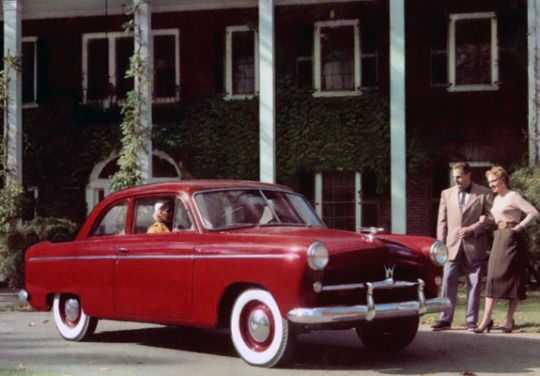
During the 1950s, many Americans were purchasing a new or second vehicle for their household. Some families wanted a smaller vehicle for their driving needs, and women were driving more frequently and becoming more independent. On the other hand, other Americans still wanted a full-size vehicle with more horsepower and large tail fins.
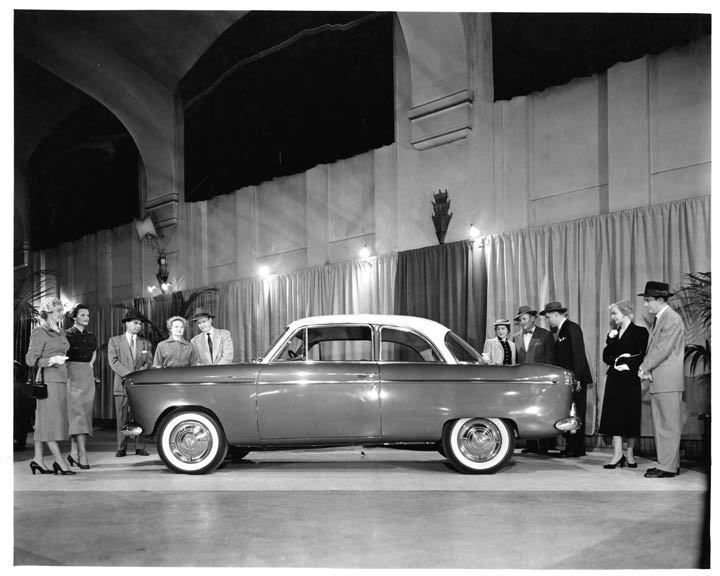 The 1952 53 Aero Willys at an auto show
The 1952 53 Aero Willys at an auto show
The Aero Willys models, manufactured between 1952 and 1955, were practical, clean-lined compact vehicles that some liked and some did not. They were designed by Clyde Paton and Phil Wright. Some automotive historians called the Aero Willys a design with monocoque construction.
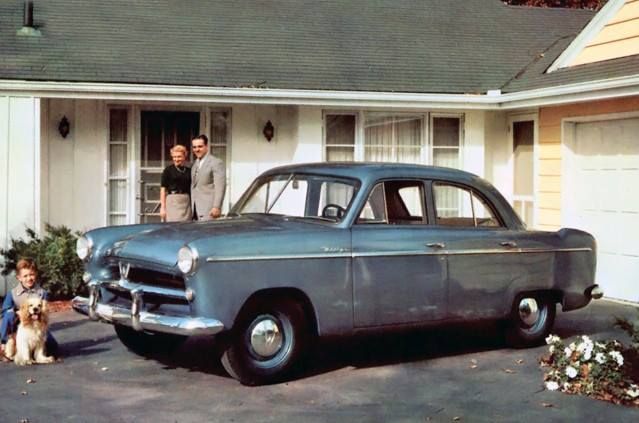 A 1952 53 Aero Willys promotional photo
A 1952 53 Aero Willys promotional photo
The practical Aero Willys models were great-looking vehicles that offered all the best riding comforts represented in a compact vehicle. The Aero Willys sedan was made for the small car market, but its price was considered expensive, which led to poor sales. Other American small vehicles, like the Kaiser Henry J and Hudson Jet models, were also failures in the American market. The small car market did start to change later in the 1950s with the introductions of the Rambler Country Club and the very successful 1958 Rambler American in 1958 when the public began to be more accepting of smaller automotive designs.
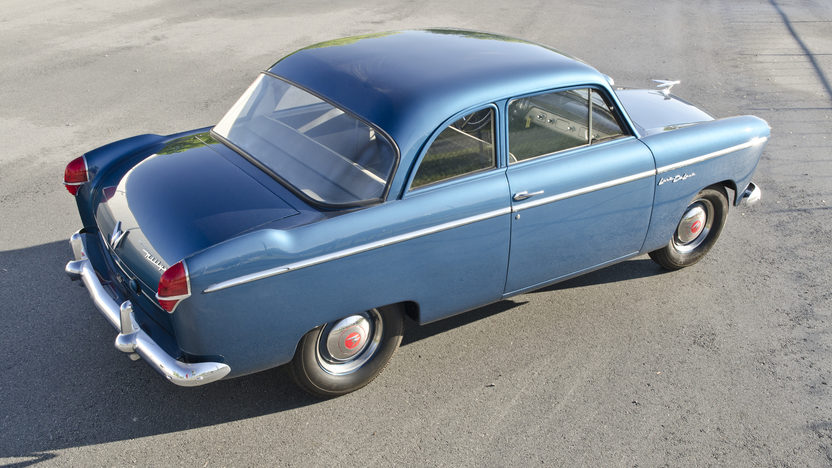 The 1952 53 Aero Willys (SMClassicCars.com)
The 1952 53 Aero Willys (SMClassicCars.com)
Some automotive historians have said that Aero Willys had no real sales organization, with only a couple dozen truck dealers that made the car available. Aero Willys sold 31,000 cars for the 1952 model year and 42,000 units for 1953. In 1953, Aero Willys made some minor changes with the automobiles, including red-painted wheel cover emblems and a gold-plated “W” in the grille symbolizing the company’s 50th anniversary. The Aero Wing models were replaced by the Aero Falcon, and a new four-door sedan was developed for the Lark series.
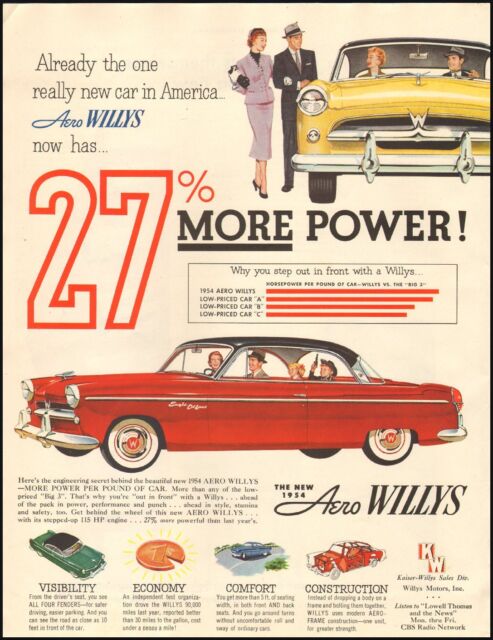 A 1952 53 Aero Willys ad (Robert Tate Collection)
A 1952 53 Aero Willys ad (Robert Tate Collection)
In 1954, Willys-Overland was purchased by Henry Kaiser, who integrated the company into Kaiser-Frazer Corporation, forming the Toledo-based Kaiser-Willys Sales Corporation. Later, the Kaiser-Frazer plant at Willow Run was sold to General Motors, and Kaiser automotive production was moved to the old Willys plant.
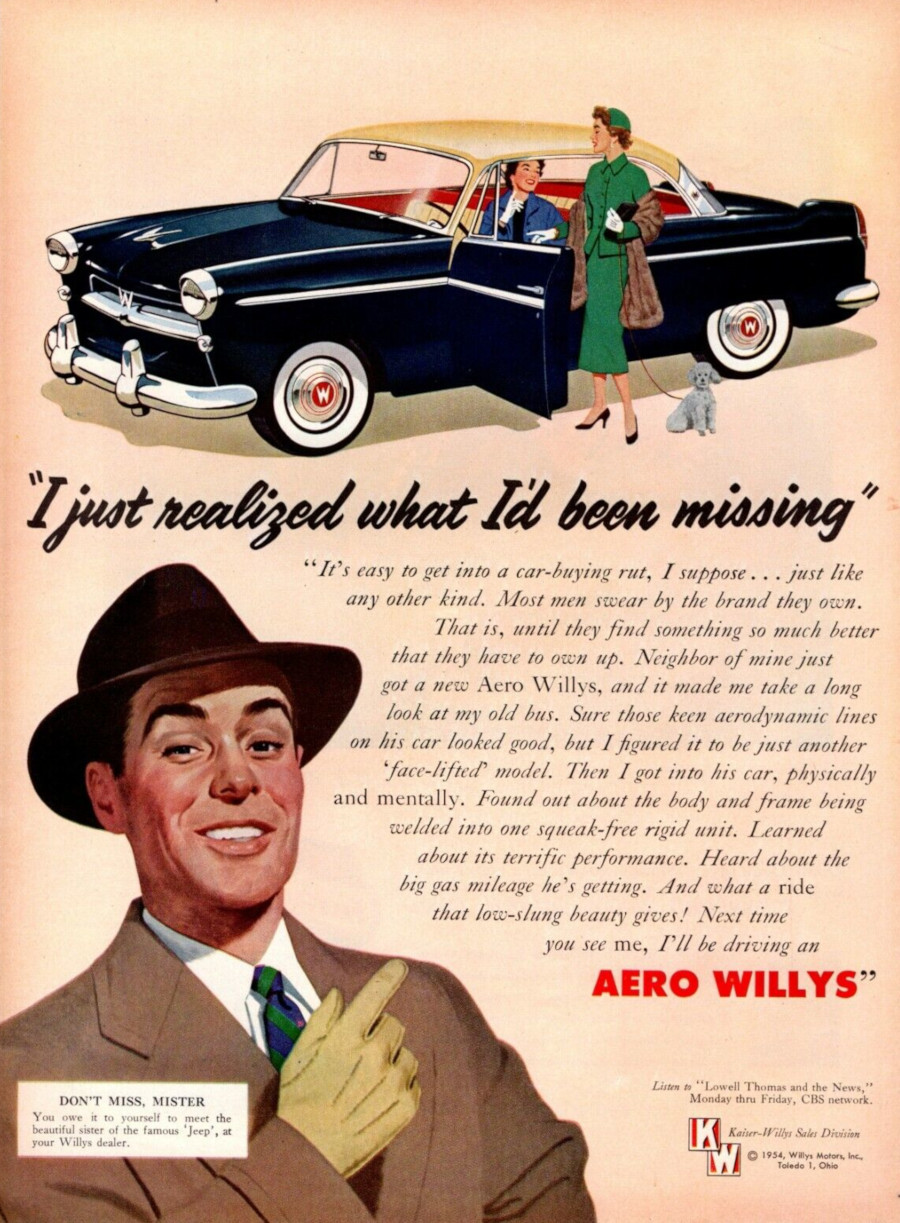 A 1952 53 Aero Willys ad (Robert Tate Collection)
A 1952 53 Aero Willys ad (Robert Tate Collection)
The 1954 Aero Willys models were the same as the 1953 designs, only this time with larger taillights and a new front-end suspension. The new suspension offered the driver and passengers a more comfortable ride, but sales dropped to around 12,000 units.
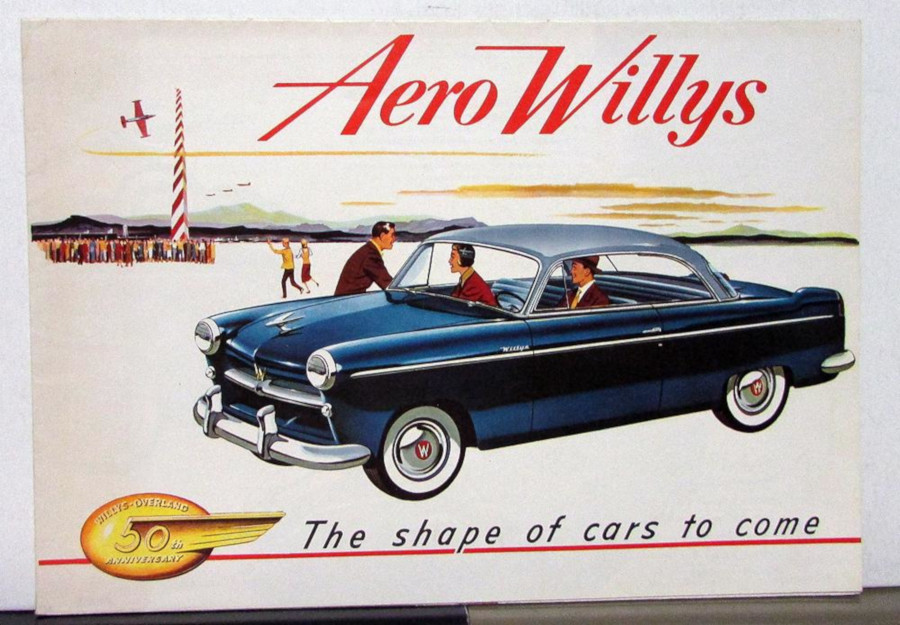 Another 1952 53 Aero Willys ad (Robert Tate Collection)
Another 1952 53 Aero Willys ad (Robert Tate Collection)
By early 1955, Kaiser-Willys had decided to end Willys Aero production, which was now known as the Bermuda series. The model line was divided into the custom two or four door sedan models, which did not sell very well. The Bermuda series was advertised as the lowest-priced models, but only 2,215 units were built. The 1955 Bermuda models were changed with a new front-end look that was not well-liked. Some automotive historians have said that no one would take credit for the redesign of the 1955 Bermuda models.
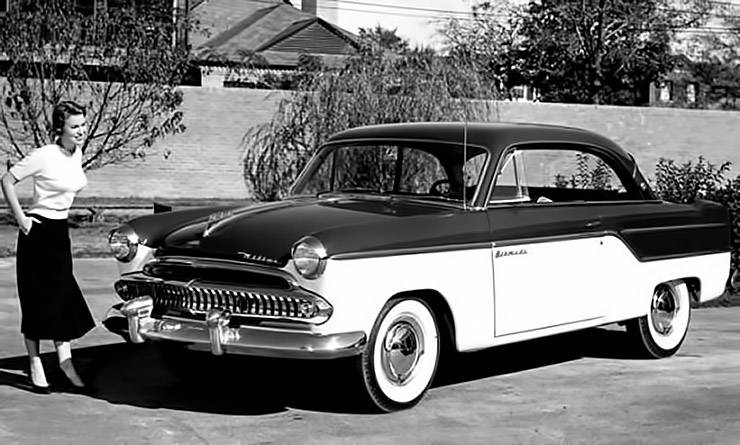 A 1955 Willys Bermuda hardtop
A 1955 Willys Bermuda hardtop
The advertising for the Willys Aero models included messaging like “the shape of cars to come,” “Aero Willys now has 27% more power” and “I just realized what I’d been missing.”
In conclusion, the Aero Willys designs and tooling were sent to Brazil. Later, a redesigned model was developed by Brooks Stevens’ design company. While Aero Willys ultimately could not compete with the Big Three, their models did open the door for future compacts, including the Rambler American and the popular Ford Falcon. Today, the Aero Willys models are remembered as a part of our automotive history.
Bibliography
Flint, Jerry. “The Dream Machine: The Golden Age of American Automobiles, 1946-1965.” Quadrangle/The New York Times Book Co., 1976.
Langworth, Richard M. “Encyclopedia of American Cars, 1930-1980: 50 Years of American History.” Beekman House, New York, 1984.
1952-1954 Aero Willys original sales material. Courtesy of the Robert Tate Collection.



